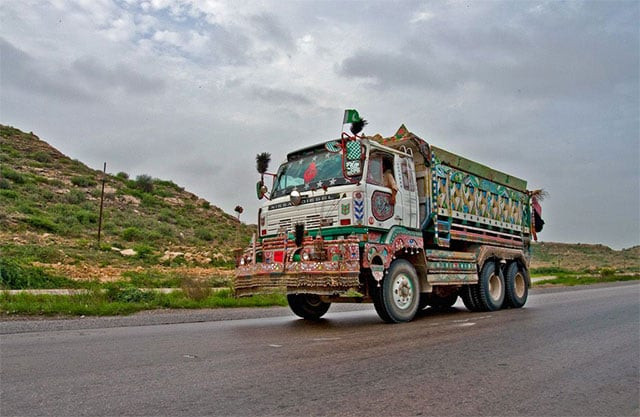
The prime minister has been active travelling to various capitals of Central Asian states discussing with his counterparts avenues of trade and investment cooperation. He was recently in Tajikistan for the inauguration of Casa-1,000 power supply project.
Regional integration can help reduce poverty, say experts
Casa-1,000 is an important regional connectivity initiative that would establish an energy grid connecting Pakistan, Afghanistan, Tajikistan and Kyrgyzstan. It will transport electricity from Tajikistan and Kyrgyzstan to energy-starved Pakistan and Afghanistan in summer when these Central Asian states have surplus electricity produced through hydel resources.
It is envisaged that the project on its completion, which is expected in 2020, will transmit 1,300 megawatts, of which 300MW will be for Afghanistan and the rest for Pakistan.
The China-Pakistan Economic Corridor (CPEC) is another important regional integration initiative that would link the western region of China with the port of Gwadar through roads and railways. The connectivity will be used by China for transit of goods through Pakistan using the deep seaport of Gwadar. This would enhance China’s trade competitiveness by reducing shipping time for markets in Europe, Africa and eastern ports of USA.
The CPEC will help Pakistan upgrade its existing logistics infrastructure and facilitate establishment of economic zones on the proposed routes.
The other important step of the government to facilitate regional integration has been the accession to the TIR Convention – a UN-sponsored transit framework facilitating the transit of goods by contracting parties.
Pakistan, Iran plan to take annual trade to $5b
TIR will enable the private sector of Pakistan to reach out to Central Asian markets and beyond and would also provide an option for the Central Asian countries to use the ports of Pakistan for trade.
Pakistan is also actively pursuing road construction projects under the Central Asian Regional Economic Cooperation (Carec) which is a regional group focused on promoting economic integration.
Pakistan has also received financial aid from the ADB to upgrade the land customs stations to integrate border posts for trade and transit facilitation. The upgrade of border customs posts will substantially reduce dwell time and congestion at the borders and enhance competitiveness of Pakistan’s cross-border trade.
Tapi (Turkmenistan, Afghanistan, Pakistan and India) is another initiative connecting this region with Central Asia through a pipeline for transportation of natural gas. This project, which is expected to be operational by 2020, would transport natural gas from Caspian Sea to South Asia.
These regional initiatives have laid the foundation for connectivity and interdependence. These would facilitate trade in goods and energy products and have the potential to create sustainable economic opportunities for the region.
Travel restrictions
One important and essential component for regional integration is conspicuous by its absence. It is the movement of people. Trade and regional integration will happen when people from the region freely interact, communicate and easily travel from one place to another.
At the end of the day, it is the people that matter when it comes to making business and trade deals. As long as there are restrictions placed on their movement, the regional integration framework would remain underutilised.
Afghanistan losing interest in trade links with Pakistan
It has become extremely difficult for travellers, both tourists and businesses, from Pakistan to obtain visas to travel to Central Asia. Similar is the situation of travellers from Central Asia. There may be genuine security concerns from both sides but the fact remains that it is the genuine travellers that suffer due to these restrictions.
Until recently there were no direct flights from Pakistan to Central Asia. Though there seem no apparent restrictions on the airlines but due to visa limitations it does not make economic sense to operate flights.
The direct airtime journey from Islamabad to most of the cities of Central Asian Republics is under two hours but now passengers have to transit through the Middle East or Turkey that takes 20 hours to fly.
This region was once part of the ancient Silk Route connecting the Orient with the West through lucrative spices and silk trade that also brought philosophers, students, teachers and adventurers along. Experts believe that Silk Route played a significant role in the economic and intellectual development of civilisation.
To realise the vision of fostering economic and trade integration with Central Asia, people-to-people interactions are essential. Such interactions facilitate exchange of ideas and foster bonds that are a prerequisite for improving confidence amongst the businesses to take trade and investment risks. The people to people interactions where states are seen as a facilitator will be a catalyst to realise these ideals.
The writer is a development professional with over 20-year experience in public and development sectors
Published in The Express Tribune, May 23rd, 2016.
Like Business on Facebook, follow @TribuneBiz on Twitter to stay informed and join in the conversation.


1732623521-0/bitcoin-(1)1732623521-0-270x192.webp)















COMMENTS
Comments are moderated and generally will be posted if they are on-topic and not abusive.
For more information, please see our Comments FAQ